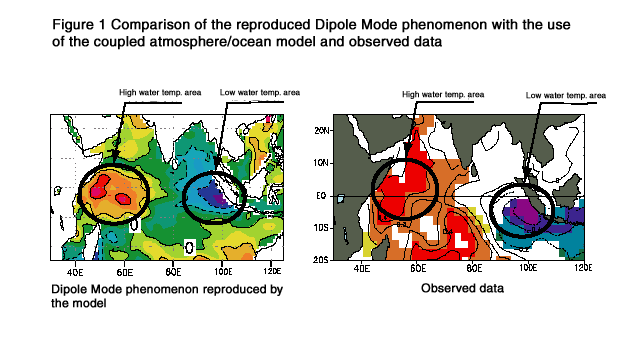Using a high-resolution coupled atmosphere/ocean model, the Dipole Mode Phenomenon was successfully reproduced by a simulation (Figure 1), which clarified the processes of occurrence, growth and decay of the phenomenon (Figure 2). In addition, it was found that the Dipole Mode phenomenon is an independent atmosphere/ocean interaction in the Indian Ocean, with no causal relation to El Nino effect in the Pacific Ocean (Figure 3). Further, the equatorial current in the Indian Ocean enhanced by ocean surface wind, plays an important role during its developing process. Based on the model's success, predictability of climate change in the Asian countries including Japan and in the Indian Ocean can be significantly increased by joint development of JAMSTEC's Triton Buoy Program deployed in the Indian Ocean, and the satellite observation program of ocean surface wind planned by NASDA (by ADEOS satellite sensor, SeaWinds).
 |
Reference: Iizuka, S., Matsuura, T., and Toshio Yamagata, The Indian Ocean SST dipole simulated in a general circulation model. Geophysical Research Letters, vol. 27, pages 3369-3372, 2000. (pdf)